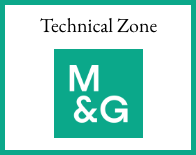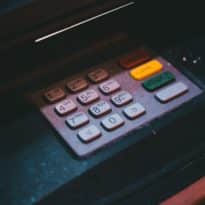Cool down or supercycle – which commodities camp are you in? Darius McDermott, managing director, FundCalibre, provides his point of view
It’s been nothing short of a rollercoaster for investors in commodities in the past 18 months.
Demand is the buzzword for this asset class, so the unprecedented lockdown we saw across the globe in 2020 hit hard, particularly for oil and industrial metals. Fast forward to the early part of this year and the hope was that a better-than-expected economic recovery, coupled with other longer-term trends, could result in another supercycle.
Today, things seem slightly more muted, as concerns about the the Delta Variant and the continued cooling off of the Chinese economy have slowed momentum. There’s an argument we are now in the midst of a mid-cycle slowdown, but it’s by no means a unanimous view. The commodity bulls are still talking about the threat of the inflation trade – and with central banks continuing to spend their way out of trouble through the likes of improving infrastructure (creating jobs along the way), the asset class clearly retains its attractive attributes.
When we look at commodities, we tend to split them into four areas – precious metals, industrials metals, energy and agriculture.
Gold and silver are the logical starting point. Topping $2,000 an ounce for first time in 2020, the performance of gold has been somewhat incongruous in this year. Arguably, the mix of high inflation and lower bond yields should cultivate the perfect environment for gold investing. However, that’s not really been the case (although at over $1,800 an ounce it is hardly cheap relative to history*). One theory is the gold price overshot on the back of the pandemic as investors ran for cover. Whatever your view on this, we would argue you should continue to hold an allocation to gold in your portfolio as a super long-term hedge, particularly if inflation takes off in these strange times.
Silver was then the place to be coming out of the sell-off and, although we’ve already seen strong gains, we still favour it as it plays into a number of the renewables trends and has a strong industrial demand.
Oil suffered a double blow of demand falling due to the global lockdown and the price war between the Saudis and Russia in 2020. The price of a barrel of oil turned negative at one point, but has since recovered to around $70**. Pessimists would point to long-term challenges for this fossil fuel in particular, with the likes of fracking and technology changing the game for long-term demand. Anything between $40-70 a barrel does not seem too far off the mark long-term.
One area we are bullish on long-term is industrial metals, particularly as the transition to cleaner energy gathers pace. Infrastructure will only grow in this space, with President Biden’s recently approved $1 trillion infrastructure bill a good example of this. Electrification is happening on a global scale too. Take copper for example: earlier this year, the International Energy Agency (IEA) sounded the warning bell on the global supply of key minerals—particularly copper to “support an accelerated deployment of solar panels, wind turbines and electric vehicles.” Goldman Sachs predicts that by 2030, copper demand will grow nearly 600 per cent to 5.4 million tons***. The IEA also says the demand for lithium (a key component in electric cars) will grow more than 40 times by 2040, while cobalt and nickel will rise by 20 times****.
The agriculture story remains as long-term as ever. The population is growing – meaning more mouths to feed – as is the requirements of a rapidly growing middle class. To put this into context, there is a 56 per cent food gap between the crop calories produced in 2010 and those needed in 2050 in normal growth conditions^.
While there is no doubt there is a global desire to improve infrastructure and move to a greener economy, ultimately, China still accounts for over half of the international demand for commodities^^. Any hopes of a supercycle are therefore likely to be tied to the fortunes of the Chinese economy.
It’s almost impossible to consider commodities as one pure asset class today – given the dispersion we have in terms of our outlook for each sub-class. China is likely to be the key to a short-term supercycle but the long-term drive towards improving infrastructure – and a greener focus – does bode well in the longer-term. Investors may want to consider the likes of Jupiter Gold and Silver and the Ninety One Global Gold funds for exposure to precious metals. Those wanting exposure to industrial metals may like the Fidelity Asian Pacific Opportunities fund or the ASI Latin American Equity fund.
*Source: tradingeconomics.com
**Source: Oilprice.com – Brent Crude at 3 September 2021
***Source: Forbes.com
****Source: IEA.org
^Source: World Resources Institute
^^Source: Fidelity – China, commodities and the ‘supercycle’
Past performance is not a reliable guide to future returns. You may not get back the amount originally invested, and tax rules can change over time. Darius’s views are his own and do not constitute financial advice.
This article was first published in the October issue of Professional Paraplanner.
































